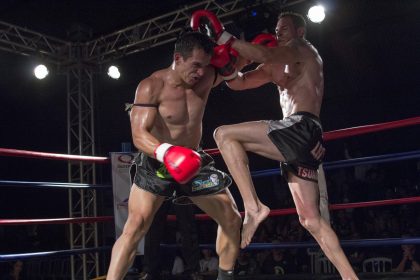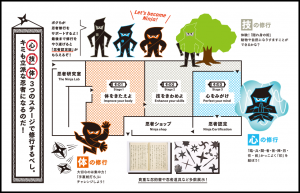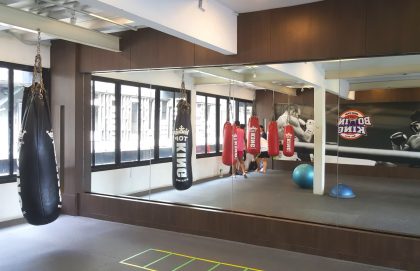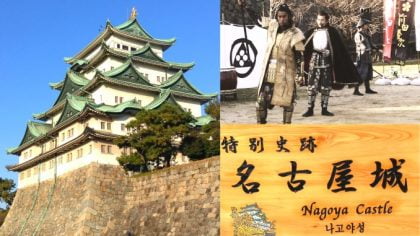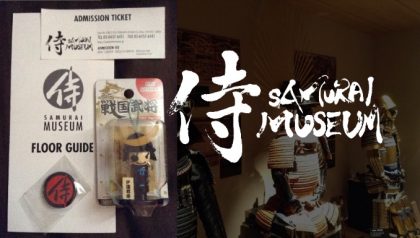Do you dream of studying and traveling abroad to train with the masters of your discipline?
Though you are loyal to your dojo or group of parkour friends, you know that there are more opportunities abroad. To try a new art or develop new skills in what you already know, while traveling the world, would be amazing, right?
Wandering ninja, this is the series for you.
The Ninja Adventurer is a collaboration between Logen and I to help you get the resources, tips, and inspiration needed to see the world.
If you’ve read some of my previous travel and historical articles, you know I routinely try out “training”, or do research on samurai and ninja. Though the Ninja Adventurer includes attraction/training courses, this is for those of you who want the challenge.
What it means to be a Ninja Adventurer?



There is a belief in martial arts that the student who travels can better hone their skills. No one master can teach the student everything he or she knows, and so the student enters a period of pilgrimage. Nowadays, the chance of having the most epic pilgrimage ever is attainable.
Plus, the places many could only dream of training (like monasteries or temples in the discipline’s origin country) are now more open to outsiders. Or maybe you just have a hankering for practice in Bujinkan taijutsu in Scotland, for example.

Likewise, if you crave connecting with people through parkour movements, street workout, running, and more.
The Ninja Adventurer is a person, like you, with that dream.
But how do you plan for an adventure like this? How do you budget? Pack? Where do you go? And how long do you go training for?
Throughout this series, those questions will be answered.
The Beginning of the Journey

If you have never traveled, there is no better time than now.
It doesn’t matter how many years young you are. It doesn’t matter if you are on a budget or how some flexibility with finances. Also, it doesn’t matter if you’ve been training in martial arts or parkour and free movement for years or are completely new to the world of fitness and wellness.
1Pick your training goal


There is a program out there for you. All you have to do is fix your sights on a specific goal.
Obviously, the goal is going to be to train or work on a specific goal. Write out exactly what you want to do.
Example: I want to learn Jiu Jitsu grappling.
Example: I want to attend a parkour (or movement) jam.
2Determine your level of experience

Okay, now, you need weigh how much you know versus what you don’t know. Some programs have an experience prerequisite. Leave ego at the door here and realize that every place measures progress differently. The belt you have now may not be equivalent to how the instructors or masters of the programs you attend assess your skill level.
Now, you have your goal and your skill level. Think of these things when you start researching descriptions for programs, because you have to decide if “rigorous training,” “the ultimate challenge,” or even “accessible for all levels,” is in line with your aspirations.
Example: I want to learn beginner level Jiu Jitsu grappling.
Example: I want to attend a parkour (or movement) jam that accepts people of all skill levels.
3Decide how long you'll stay to train

From there, you need the length of your stay. Some training programs run for three days. Some last a year. This time factor can complicate the travel procedure, because you may a long term visa and housing depending on the country.
If this is your first time ever doing some kind of training intensive, I recommend going for a weekend or a week. This allows you to see if going away for training suits your needs or if you actually like it. Nothing is worse than signing up for a half of year of training and realizing that you dislike everything about the location and program.
Example: I want to learn beginner level Jiu Jitsu grappling for 3 months.
Example: I want to attend a parkour (or movement) jam that accepts people of all skill levels for one week.
4Consider your ideal budget

The last thing to consider is money. Can you afford training where you want to? Some destinations are much more affordable than others. Some places are easier to reach than others. There are programs that include housing and meals, but some leave that all up to you.
Carefully weigh the cost of airfare, public transportation, food, insurance, accommodations, and even the exchange rate. Oh, and don’t forget about foreign transaction fees attached to your bank card… I learned the hard way. The foreign transaction fees actually wiped out one of my accounts ($5 tacked onto each withdrawal adds up fast).
Be prepared to pay anywhere from US$500 to US$3,000 or higher. Shocking, I know.
Example: I want to learn beginner level Jiu Jitsu for 3 months with a budget of US$2500.
Example: I want to attend a parkour (or movement) jam that accepts people of all skill levels for one week, with a budget of US$700.
How should your preliminary plans look like?
At the end of this preliminary planning you have a list that looks like:
I want to learn beginner level Jiu Jitsu grappling for 3 months with a budget of US$2500
I want to attend a parkour (or movement) jam that accepts people of all skill levels for one week, with a budget of US$700.
(Preliminary planning: Initial goal, experience level, time frame and ideal budget)
The Ninja Adventurer is NOT sworn to poverty

There are a couple of options for keeping a good stream of money coming in, even as you travel. If you’re from a country that allows for working holiday visas, then you may be able to work in the country while you train.
Great! Right?
Not necessarily. Do you speak the language? Will you have the energy to do physical labor, which is the mainstay for most people on working holiday visas? Is that labor going to get in the way of what you really want to do?
Visas for Working, Students and Cultural Activities
If you can’t get a working holiday visa, like me (the American), there are a few routes to consider. You may be able to get a visa that is for study. Some countries simply call it a student visa. Others, like Japan, have special categories, like the cultural activities visa. But you will need special permissions to work.
Digital Nomad & Freelancing

Another method has kept me afloat for 3 months, while traveling throughout Southeast Asia and Western Australia. That would be the digital nomad lifestyle.
I write for more than just Way of Ninja. Plus, I take full advantage of my Japanese bilingualism to translate and interpret. If you have a skill that can freelanced (like photography, online tutoring, online English teaching, or travel writing), you already have a global market at your fingertips. The key is that this business of yours is based in your home country.
So, as long as you have loyal clients and a decent business platform, you can work and train on your own terms.
Final Thoughts

Are you ready? Your journey as a Ninja Adventurer is just beginning. Now that the idea is planted in your mind, look forward to the next installation.
Rather than a general overview of how to get this journey started, I’m going to give you an in depth look to several martial arts training abroad programs and how to prepare for the trip.
Until next we meet, Ninja, never stop wandering.

